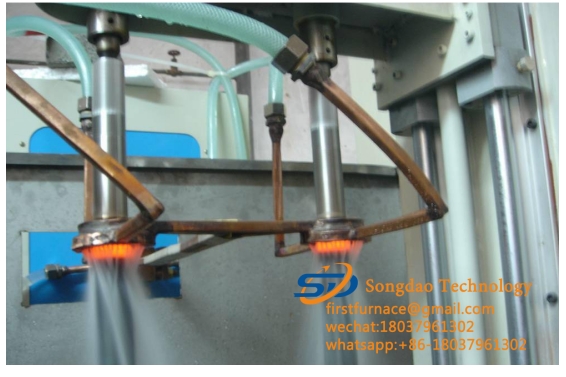- 11
- Dec
Analysis of Quenching Process of Induction Heating Quenching Equipment
Analysis of Quenching Process of Induction Heating Quenching Equipment
When the depth of the hardened layer that the frequency of the existing equipment can reach is too shallow to meet the processing requirements, a larger depth of hardened layer can be obtained by the following methods:
(1) During continuous heating and quenching, reduce the relative moving speed of the inductor and the workpiece or increase the gap between the inductor and the workpiece.
(2) When heating and quenching at the same time, reduce the output power of the equipment or use intermittent heating. The output power of the device can be adjusted by reducing or increasing Vm. Intermittent heating is equivalent to segmented preheating; during the intermittent heating process, the temperature of the workpiece rises stepwise to the process specified temperature. No matter which method is used to heat the workpiece, the purpose is to obtain a greater depth of the heating layer by extending the heating time and relying on the conduction of the surface heat to the center, and to obtain a greater depth of the hardened layer after quenching and cooling.
When there are multiple parts of the same workpiece that need to be quenched and hardened, they should be heated in a certain order to prevent tempering or cracking of the parts that have been quenched and hardened.
For example: (1) The stepped shaft should first quench the small diameter part, and then quench the large diameter part.
(2) The gear shaft should first quench the gear part and then quench the shaft part.
(3) Multi-connected gears should first quench the small-diameter gears, and then quench the large-diameter gears.
(4) Internal and external gears should first quench the internal teeth and then quench the external teeth.

